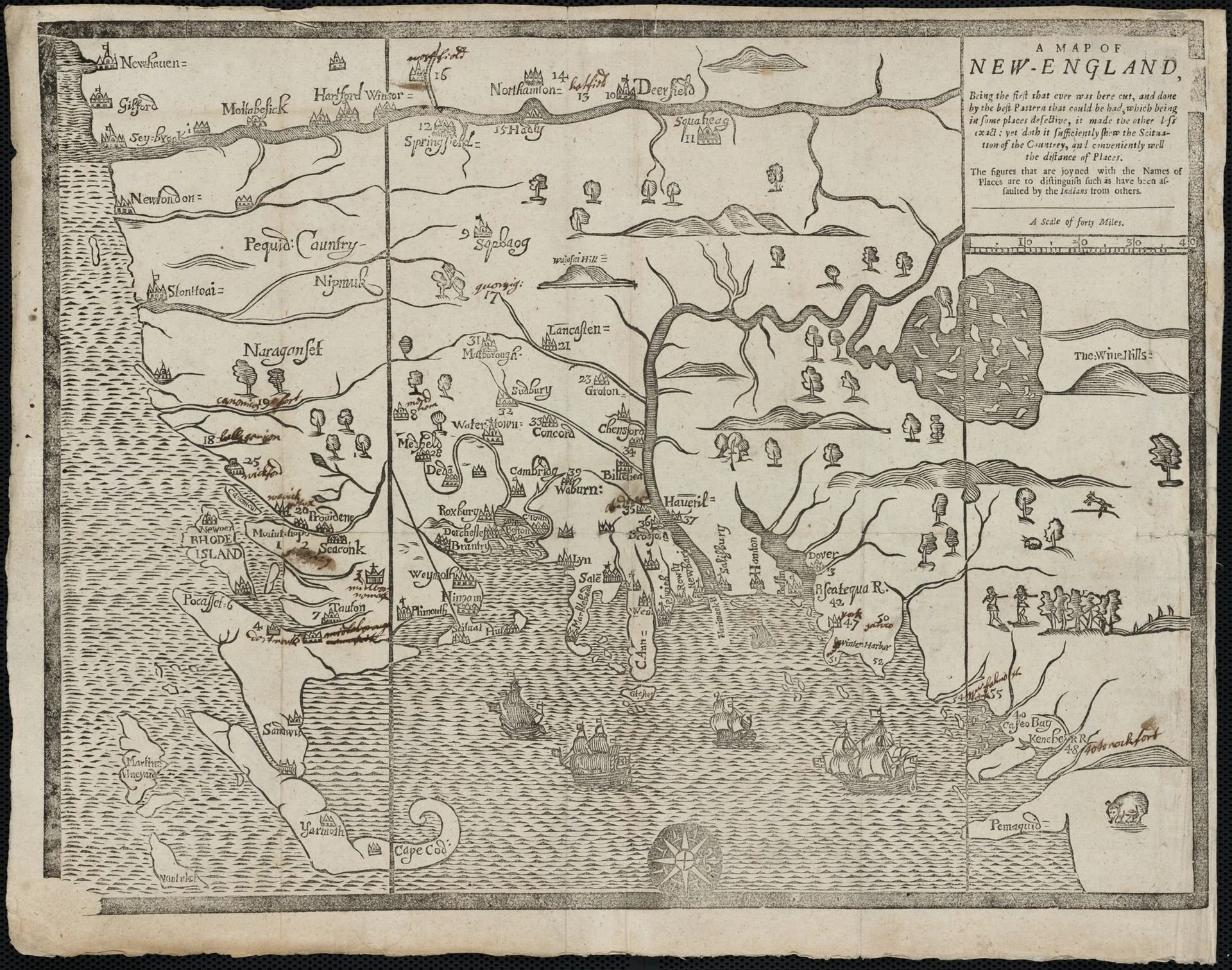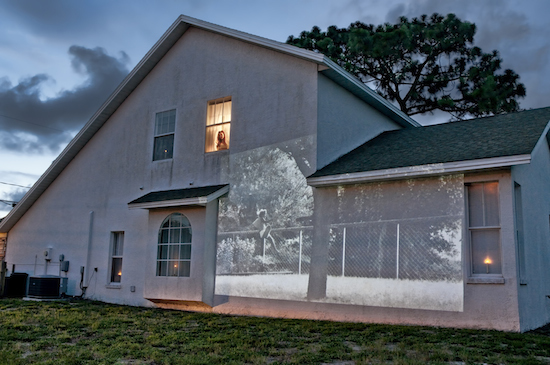
Don Pesci: The unmentionable 'F' word
VERNON, Conn.
Kevin Profit for ecoRI News: A fragile underwater marvel and source of fish
From ecoRI News Cashes Ledge, 80 miles off the coast of Gloucester, Mass., is an oasis for sea life. The peaks and canyons of the 22-mile-long underwater mountain range create nutrient- and oxygen-rich currents that support diverse habitats throughout the 550-square-mile area.
At elevations where sunlight reaches the submerged peaks grows the largest continuous kelp forest — one of the most productive ocean ecosystem types — along the Atlantic Seaboard. Cashes Ledge is home to the depleted Atlantic wolffish, red cod, sea stars, anemones and rare sponges, and acts as a migratory pass for blue sharks, humpback and right whales, and bluefin tuna.
As a pristine example of a Gulf of Maine ecosystem, Cashes Ledge has been used by scientists as an open-sea research laboratory for decades. Relatively unimpaired by human activity or pollution, the area acts as a benchmark against which the health of the rest of the ocean is measured.
Since 2002, Cashes Ledge has been protected by the New England Fishery Management Council (NEFMC) from habitat-damaging fishing practices, such as bottom trawling and scallop dredging, in an effort to restore depleted fish stocks, including cod. Cod stocks are at historic lows — 3 percent of a sustainable level in the Gulf of Maine — because of decades of overfishing and high-risk fishery-management decisions, according to environmental groups such as the Conservation Law Foundation (CLF).
Bottom trawling at Cashes Ledge could also destroy entire sections of kelp forest and wipe out populations of sea anemones that would take more than 200 years to recover, according to the CLF.
Protected areas, such as the one surrounding Cashes Ledge, also have been shown to be more resilient to climate change, and provide sea life places to adapt to warming and acidifying waters.
The Magnuson-Stevens Act of 1996 required the NEFMC to identify essential fish habitat, minimize adverse effects caused by fishing as much as feasible considering economic and other factors, and find ways to enhance essential fish habitat. The act also requires that the council update and improve habitat programs every five years. The NEFMC’s habitat management plan was due for a five-year review in 2004, but is still incomplete. The plan, titled the “Omnibus Essential Fish Habitat Amendment 2,” is currently in draft form and is open for public comment until Jan. 8.
The current draft offers a range of possible conservation alternatives, each made up of one or more possible protected areas in a geographic region encompassing the Gulf of Maine, Georges Bank and southern New England. Each possible protected area was determined using multiple analyses, including the Swept Area Seabed Impact model, and other information such as analysis of juvenile groundfish distributions, combined with information about the current status of various stocks and their affinities for vulnerable habitat types.
After the public comment period closes, the NEFMC will consider each comment and then choose the alternatives that it believes will best protect essential fish habitat from the negative effects of fishing to the extent feasible considering economic and other factors.
The CLF, an organization that advocates for increased protection of ocean habitat in New England, claims that many of the alternatives in the draft Omnibus Habitat Amendment would reverse protections previously granted to vital areas in New England waters in favor of shortsighted fishing-industry interests. The groundfish and scallop industry, for example, is pushing to reduce the area currently protected around Cashes Ledge by 70 percent.
According to a September brief by the Pew Charitable Trusts titled “Risky Business: How denial and delay brought disaster to New England’s historic fishing grounds,” Georges Bank could lose 96 percent of its remaining protected area, despite cod populations being at only 8 percent of a sustainable level. The brief states, “Overall, if the NEFMC chose the smallest closed-area option for each subregion, the total area afforded year-round protection would drop by 71 percent to just 1,909 square nautical miles” — a reduction roughly the size of Connecticut.
According to Shelley, protected areas like Cashes Ledge are essential to the long-term health of New England’s fisheries. Older and larger fish are vital to the recovery of depleted populations, he said, because they experience greater reproductive success than their younger counterparts. Protected areas have been shown to contain more numerous and older fish than unprotected areas and become incubators for neighboring waters.
Shelley said California has experimented with habitat closures as a way of increasing fish stocks. He said fisherman initially opposed the closures, but many came around after experiencing an increase in catch along the edges of the protected areas.
In another example, cited in the Pew brief, “the biomass of scallops across the New England fishery region increased dramatically in association with the closures on Georges Bank. New Bedford, Massachusetts, has the highest fishing revenue in the nation because of scallops.”
Many New England fisherman want to reopen protected areas such as Cashes Ledge to fishing because there are more fish in them, but according to Shelley more abundant fish populations in closed areas prove the protections are working and should remain in place or be expanded. If the protected areas are reopened, he said, fisheries will revert back to depleted states.
More of New England’s waters need to be protected, not less, according to Shelley. He said the Omnibus Habitat Amendment isn’t going to provide that result.
“In this case, preserving the status quo is better than the preferred alternatives of the NEFMC,” Shelley said.
In early December, 138 marine scientists and academics signed a letter to National Oceanic and Atmospheric Administration (NOAA) fisheries officials expressing deep concern about any proposals from the NEFMC that would significantly reduce habitat protection. Signers include leading names in marine and fisheries biology such as Daniel Pauly, Callum Roberts and Sylvia Earle.
“In terms of area alone,” they wrote, “the Amendment offers no alternatives that would (expand) the overall area protected in the region. Given the current state of some of the managed fish populations, protecting more, not less, habitat would seem to be an alternative worthy of consideration.”
The letter suggests enacting more comprehensive fishing-gear restrictions in protected areas, instead of only prohibiting bottom-tending gear. It also contests the arguments in support of diminishing habitat protection.
“Under certain scenarios,” the signers wrote, “a smaller amount of diverse habitat may have greater ecological benefit than a larger amount of lower value (habitat). But we are not persuaded that there is sufficient evidence that this scenario can be applied here with a high degree of safety or certainty. The (amendment) does not make a strong case that the new network of (protected habitat) will be a net gain or even maintain the ecological status quo for the region as a whole.”
The letter concludes that reductions in habitat protection would be highly unwise and unsupportable by current science.
“Too often, NEFMC has ignored or downplayed scientific data in favor of the short-term economic interests of the fishing industry,” Peter Baker, director of Northeast U.S. ocean issues for The Pew Charitable Trusts, wrote in a recent blog post. “That’s the sort of decision-making that brought the region to its current state: a federally declared fishery disaster that has required tens of millions of taxpayer dollars in assistance. It’s time to start listening to the science.”
More of the waters and seafloor identified as important by scientists that cod need to spawn, feed and mature should be made off-limits, according to Baker.
“Habitat is where fish make more fish. And what New England needs now is more fish,” he wrote. “Unfortunately, New England’s regional fishery managers have proposed a plan that could actually result in the opposite, a dramatic reduction of habitat areas.”
To help the public focus their comments on the alternatives likely to be chosen, the NEFMC released its own preferred alternatives prior to the comment period. In most cases, the preferred alternatives are not the “worst-case-scenarios” many conservation groups cite to bolster their arguments.
The NEFMC has suggested maintaining one existing large closed areas in the western Gulf of Maine, and the eastern Gulf of Maine, currently unprotected, would stand to gain protections from the amendment. However, in most cases, the council’s preferred alternatives reduce the overall area currently protected.
Current closed areas on the left are generally larger than those preferred by the NEFMC on the right. The NEFMC didn’t selecte any preferred habitat alternatives in the Georges Bank or Great South Channel/Southern New England subregions, but its analysis does include these subregions and offers a variety of alternatives. (Omnibus Essental Fish Habitat Amendment 2 Public Hearing Documment)At a public hearing for the draft Omnibus Habitat Amendment in Warren, R.I., in early December, clam, lobster and scallop fishermen spoke out in favor of specific alternatives that would open areas currently closed to fishing, prevent areas currently open to fishing from becoming closed, and relaxed fishing-gear regulations to improve their catch.
One surf-clam fisherman said he had been operating in the same fishing grounds on the Nantucket Shoals for 35 years without negative impacts. He requested the Omnibus Habitat Amendment include an exemption for surf-clam fishing, including in closed areas, because of the relatively benign gear used by his fishery.
Jerry Elmer, of CLF Rhode Island, was the sole conservationist to testify at the hearing. “This fish habitat amendment should be viewed as an opportunity to enlarge protected habitat,” he said.
Jeremy Collie, professor of oceanography at the University of Rhode Island, testified in favor of alternatives that would continue year-round closures of the most vulnerable habitat on northern Georges Bank. He said it would be a mistake to allow bottom fishing in these areas.
In a follow up e-mail to ecoRI News, Collie wrote that he generally agrees with the options favored by the NEFMC and that he supports the council’s analysis showing that the favored alternatives will result in mostly neutral or positive economic and habitat impacts.
Written comments on the draft Omnibus Habitat Amendment can be submitted via e-mail to nmfs.gar.OA2.DEIS@noaa.gov, subject line: “OA2 DEIS Comments.”
Kevin Profit wrote this for EcoRI News.
David Warsh: Knowledge economy superstars and hollowing of middle class
SOMERVILLE, Mass.
It is one of the great explications of economics of modern times: Written in 1958 by libertarian Leonard Read and subsequently performed by Milton Friedman as The Pencil, a couple of minutes of Free to Choose, the 10-part television series he made with his economist wife, Rose Director Friedman, broadcast and published in 1980.
Friedman comes alive as he enumerates the various products required to make a simple pencil: the wood (and, of course, the saw that cut down the tree, the steel that made the saw, the iron ore that made the steel and so on), graphite, rubber, paint (“This brass ferrule? I haven’t the slightest idea where it comes from”).
Literally thousands of people cooperated to make this pencil – people who don’t speak the same language, who practice different religions, who might hate one another if they ever met.
This is Friedman as he was experienced by those around him, sparks shooting out of his eyes. The insight itself might as well have been Frederic Bastiat in 1850 explaining the provisioning of Paris, or Adam Smith himself in 1776 writing about the economics of the pin factory.
There is a problem, though. None of these master explicators have so much as word to say about how the pencil comes into being. Nor, for that matter, does most present-day economics, which remains mainly prices and quantities. As Luis Garicano, of the London School of Economics, and Esteban Rossi-Hansberg, of Princeton University, write in a new article for the seventh edition of the Annual Review of Economics:
Mainstream economic models still abstract from modeling the organizational problem that is necessarily embedded in any production process.Typically these jump directly to the formulation of a production function that depends on total quantities of a pre-determined and inflexible set of inputs.
In other words, economics assumes the pencil. Though this approach is often practical, Garicano and Rossi-Hansberg write, it ignores some very important issues, those surrounding not just the companies that make the products that make pencils, and the pencils themselves, but the terms under which all their employees work, and, ultimately, the societies in which they live.
In “Knowledge-based Hierarchies: Using Organizations to Understand the Economy,” Garicano and Rossi-Hansberg lay out in some detail a prospectus for an organization-based view of economics. The approach, they say, promises to shed new light on many of the most pressing problems of the present day: evolution of wage inequality, the growth and productivity of firms, the gains from trade, the possibilities for economic development, from off-shoring and the formulation of international teams, — and, ultimately, the taxation of all that.
The authors note that, at least since Frank Knight described the role of entrepreneurs, in Risk, Uncertainty, and Profit, in 1921, economists have recognized the importance of understanding the organization of work. Nobel laureates Herbert Simon and Kenneth Arrow each tackled the issue of hierarchy. Roy Radner, of Bell Labs and New York University, went further than any other in developing a theory of teams, especially, the authors say, in “The Organization of Decentralized Information Processing,” in 1993.
But all the early theorizing, economic though it may have been in its concern for incentives and information, was done in isolation from analysis of the market itself, according to Garicano and Rossi-Hansberg. The first papers had nothing tp say about the effects of one organization on all the others, or about the implications of the fact that people differ greatly in their skills.
That changed in 1978, the authors say. A decade earlier, legal scholar Henry Manne had noted that a better pianist had higher earnings not only because of his skill; his reputation meant that he played in larger halls. The insight led Manne to conjecture that large corporations existed to allocate the production most efficiently of managers, like so many pianists of different levels of ability.
It was Robert Lucas, of the University of Chicago, who took up the task in 1978 of showing precisely how such “superstar” effects might account for the size of firms, with CEOs of different abilities hiring masses of undifferentiated workers – and why scale might be an important aspect of organization. He succeeded, mainly in the latter, generating fresh interest among economists in the work of business historian Alfred Chandler.
It was Sherwin Rosen, of the University of Chicago, with “The Economics of Superstars,” in 1982, who convincingly made the case that the increasing salaries paid to managers had to do with the increase in scale of the operations over which they preside (and, with athletes, singers and others, the size of the audiences for whom they perform). A good manager might increase the productivity of all workers; the competition among firms to hire the best might cause the winners to build more and larger teams; but Rosen didn’t succeed at building hierarchical levels into his model. He died in 2001, at 62, a few months after he organized the meetings of the American Economic Association as president.
Many others took up the work, including Garicano and Rossi-Hansberg. It was the '90's, not long after a flurry of work on the determinants of economic growth spelled out for the first time in formal terms the special properties of knowledge as an input in production. The work on skills and layers in hierarchies gained traction once knowledge entered the picture.
At the meetings of the American Economic Association this weekend in Boston, a pair of sessions were devoted to going over that old ground, one on the “new growth economics” of the Eighties, another on the “optimal growth” literature of the Sixties. Those hoping for clear outcomes were disappointed.
Chicago’s Lucas; Paul Romer, of New York University; and Philippe Aghion, of Harvard University, talked at cross purposes, sometimes bitterly, while Aghion’s research partner, Peter Howitt, of Brown University, looked on.But Gene Grossman, of Princeton University, who with Elhanan Helpman, of Harvard University, was another contestant in what turned out to be a memorable race, put succinctly in his prepared remarks what he thought had happened:
Up until the mid-1980, studies of growth focused primarily on the accumulation of physical capital. But capital accumulation at a rate faster than the rate of population growth is likely to meet diminishing returns that can drive the marginal product of capital below a threshold in which the incentives for ongoing investment vanish. This observation led Romer (1990), Lucas, (1988), Aghion and Howitt (1992) Grossman and Helpman (1991) and others to focus instead on the accumulation of knowledge, be it embodied in textbooks and firms as “technology” or in people as “human capital.” Knowledge is different from physical capital inasmuch as it is often non-rivalrous; its use by one person or firm in some application does not preclude its simultaneous or subsequent use by others.
My guess is that “Knowledge-based Hierarchies: Using Organizations to Understand the Economy” will mark a watershed in this debate, the point after which arguments about the significance of knowledge will be downhill. “If one worker on his own doesn’t know how to program a robot, a team of ten similar worker will also fail,” write Garicano and Rossi-Hansberg. The only question is whether to make or buy the necessary know-how.
What’s new here is the implication that as inequality at top of the wage distribution grows, inequality at the bottom will diminish less, as the middle class is hollowed out.
[E]xperts, the superstars of the knowledge economy, earn a lot more while less knowledgeable workers become more equal since their knowledge becomes less useful. Moreover, communications technology allows superstars to leverage their expertise by hiring many workers who know little, thereby casting a shadow on the best workers who used to be the ones exclusively working with them. We call this the shadow of superstars.
For a poignant example of the shadow, see last week’s cover story in The Economist, Workers on Tap. The lead editorial rejoices that a young computer programmer in San Francisco can live like a princess, with chauffeurs, maids, chefs, personal shoppers. How? In There’s an App for That, the magazine explains that entrepreneurs are hiring “service pros” to perform nearly every conceivable service – Uber, Handy, SpoonRockert, Instacart are among the startups. These free-lancers earn something like $18 an hour. The most industrious among them, something like 20 percent of the workforce, earn as much as $30,000 a year. The entrepreneurs get rich. The taxi drivers, restaurateurs, grocers and secretaries who used to enjoy middle class livings are pressed.
Work on the organization-based view of economics is just beginning: Beyond lie all the interesting questions of industrial organization, economic development, trade and public finance. Much of the agenda is set out in the volume whose appearance marked the formal beginnings of the field, The Handbook of Organizational Economics (Princeton, 2013), edited by Robert Gibbons, of the Sloan School of Management of the Massachusetts Institute of Technology, and John Roberts, of Stanford University’s Graduate School of Business. Included is a lucid survey of the hierarchies literature by Garicano and Timothy Van Zandt, of INSEAD.
The next great expositor of economics, whoever she or he turns out to be, will give a very different account of the pencil.
. xxx
Andrew W. Marshall retired last week after 41 years as director of the Defense Department’s Office of Net Assessment, the Pentagon’s internal think-tank. A graduate of the University of Chicago, a veteran of the Cowles Commission and RAND Corp., Marshall was originally appointed by President Nixon, at the behest of Defense Secretary James Schlesinger, and reappointed by every president since. He served fourteen secretaries with little external commotion.
A biography to be published next week, The Last Warrior: Andrew Marshall and the Shaping of Modern American Defense Strategy (2015, Basic Books), by two former aides, Andrew Krepinevich and Barry Watts, is already generating commotion. Expect to hear more about Marshall in the coming year.
David Warsh, a longtime financial columnist and economic historian, is proprietor of www.economicprincipals.com.
Robert Whitcomb: Holiday cards: History at the micro level; ransoms cause killing
Every Christmas week I send “Happy New Year’’ cards to people who have just sent us holiday cards. If they took the time to send us cards then we should reply. Thus you can reconnect with a lot of people, if only once a year. In doing so, you stay in the fabric of a wider life than you might have without the card exchange. Going through them is a sort of forced review of recent history at the micro-level. And then there’s the reminder of mortality, as these cards report more and more deaths to you as the years roll by, along, of course, with the births. Then there’s the obituary by omission: Cards from certain people just stop coming. These pieces of brightly colored paper can be like those models of skulls that priests and scholars used to keep on their work tables to focus their minds.
Along with the cards comes the knee-jerk reaction to review the year past and make resolutions about the next. My central resolution is always, as Thoreau advised, to “Simplify, simplify.’’ (As a bachelor and grand moocher on friends and neighbors, it was easy for him.) But simplification is far from simple in 21st century America, and the machine upon which I’m typing this is one reason. It offers endless distraction.
“Distraction is the only thing that consoles us for our miseries,” Blaise Pascal wrote in the 17th century, “and yet it is itself the greatest of our miseries.” Peter Kreeft, a philosopher/theologian, wrote: “We want to complexify our lives. … We want to be harried and hassled and busy. Unconsciously, we want the very things we complain about. For if we had leisure, we would look at ourselves and listen to our hearts and see the great gaping hole in our hearts and be terrified, because that hole is so big that nothing but God can fill it.’’ (Or maybe luxurious leisure can fill it!)
Some people e-mail their holiday cards — to simplify and/or to save money. But these transmissions obviously lack the emotional weight and resonance of physical cards. (By the way, scientists say that reading on paper supports more memory of text than does reading on a screen.) And e-mails are too easy to delete. A really good paper card may be kept for years, perhaps in a scrapbook.
The Internet won’t destroy the paper-card business anytime soon.
xxx
The New York Times ran a piece Dec. 28 headlined “U.S. Policy of No Ransom Closes Off Other Options,’’ which I took as an implied defense of paying ransom to murderous groups such as the Islamic State in order to free kidnapped people from rich countries with big media.
Of course, these stories of Americans (such as New Hampshire’s James Foley) and other Westerners who go to the Mideast for humanitarian, journalistic and other reasons and then are kidnapped by the likes of IS are horrific. But the United States’ paying ransom to get them back will create many more such cases.
The basic problem with stories like The Times’s is that they divert attention from the broad duty of destroying a depraved group that would, with pleasure, kill millions of people if it could, to tragic individual human-interest stories. In this diversion, it puts many more people than the hostages in peril, whatever the heartwarming pictures of paid-for kidnap victims being reunited with their families.
David S. Cohen, U.S. Treasury undersecretary for terrorism and finance intelligence, nicely summarized where the ransom money goes: “[to] help fund the full range of [terrorists’] activities, including recruiting and indoctrinating new members, paying salaries, establishing training camps, acquiring weapons and communications gear, staging deadly attacks, and helping to support the next generation of violent extremist groups.’’
Why not just ship the Islamic State weapons or pay them their wages instead of paying ransom? Save time.
Paying ransom to terrorists kills. People know this, but …
Robert Whitcomb oversees New England Diary.
Jefferson Paris: Bernie in Havana
Editor’s Note: This two-act play takes off from the recent decision by President Obama to restore U.S. diplomatic relations with Cuba. Raul Castro, Fidel Castro’s brother, is president of the Council of State of Cuba. Bernard Sanders, who grew up in Brooklyn, N.Y., and is a self-described democratic socialist, is a U.S. senator from Vermont. The author is a resident of Vermont; Jefferson Parish is a nom de plume.
Scene one, Presidential office of Raul Castro, in Havana, Cuba, sometime in 2015.
Bernard Sanders enters, followed by an aide and two press photographers.
Sanders: [In a 1950’s Brooklyn accent] Hello, Mr. President.
Castro: Hello Bernie, ah, Mr. Ambassador. This is an historic occasion.
Sanders: Yes it is, Mr. President. Our president sends his regards and best wishes and asked me to say:
Buenos Dias, El Presidente.
Castro: Very good! When you return you can tell him this for me:
Go Yankees!
[Castro chuckles at his joke.]
[The two men shake hands, as the press photographer records the occasion. They then sit.]
Sanders: Mr. President…
Castro: Please call me Raul. If you don’t mind I’ll call you Bernie.
Sanders: Of course. Everyone does. Now Raul, our president…=
Castro: Barack….
Sanders: Yes, Barack and I believe it is in the best interest of our respective countries that the over-50-year-old U.S. trade embargo of Cuba be ended and free trade resume. But that requires approval by our Congress. And Congress needs some assurances from you.
Castro: Can I offer you a cigar, Bernie?
Sanders: Sure. But aren’t we in a smoke-free zone? Where I live in Vermont, you can’t even smoke in the city park.
Castro: No problemo here, Bernie. I make the rules.
Sanders: OK. [He lights up, takes a puff, then looks at the cigar.] The red band is nice touch. Now, as I was saying, Congress needs some assurances….
Castro: Such as….
Sanders: [Making sure that the photographer is filming, he removes a card from his pocket and begins reading.]
That Cuba will respect freedom of expression, religion and association; that American investors will be repaid for expropriated property; that people will be entitled to pursue life, liberty and pursuit of happiness; that you will allow political parties; that you will empty your prisons of political prisoners and renounce state-sponsored terrorism; that you will export rum and cigars to America; and that our hotels and casinos will be welcomed.
Castro: You ask for a lot, Bernie. You should be glad my brother is not here. He’d send you a fastball high and tight and shout,
“Yanqui, go home!”
Sanders: Actually, Raul, I grew up in Brooklyn and rooted for the Dodgers against the Yankees.
Castro: Ah yes. Well my wife went to MIT and rooted for the Red Sox. But you didn’t actually want Yankees to go home, did you? [chuckling] Well, we do need some new trading partners with the oil business in the crapper, so let’s discuss this more in private, si?
Sanders: Si, I mean yes, Raul. [Turning to his aide and the photographers] Will you excuse us? [They leave.]
Scene two. Same office but the two are now alone.
Castro: Hey, Bernie, where did you learn the secret socialist handshake?
Sanders: I read about it once in a book about Che, and a few years ago tried it out on Hugo at a meeting in Caracas with Joe Kennedy and his home-heating-oil company. It’s tricky to make each digit the same size and minimize the importance of the thumb. I don’t think that the press boys noticed.
Castro: Do you want me to have them arrested and find out?
Sanders: No, no [trying to smile]. Not today at least. Did you like my speech?
Castro: Well, I admired the apparent conviction. It can’t have been easy for a socialist to say. But there’s an old Spanish idiom that translated goes something like this: “You fuck the chicken if you must.” Which reminds me, how did you get Barack to appoint you ambassador?
Sanders: I learned long ago that the way to get what you want is to make yourself a pain somewhere else. I enjoyed being a senator but I wasn’t getting anywhere. So I started rumors about a presidential run of my own. Did you read about it?
Castro: Sure. I get Burlington’s Seven Days. The Bernie Beat’s terrific.
Sanders: Well, I was making the Clinton/Cuomo/Warren people nervous. They figured I couldn’t pass up this gig. The same thing happened in Vermont when I threatened to run for governor. Voila, I became a congressman!
Castro: Nice. But aren’t people afraid you’ll give away the store down here?
Sanders: Let me put it to you this way. [Taking another drag on his cigar.] We, that is, the CIA, have tons of money. I mean tons and tons and tons of it. Just look what we spent in Iraq and Afghanistan. If you’ll just relax on a few of the smaller things I talked about (like letting Caesar’s Palace into Havana and letting Catholics attend church regularly), money will go wherever you want it to…Cuba, the Caymans, Kremlin, Swiss banks, Vermont, wherever.
Castro: But La Revolution? Fidel’s vision of compete equality? Che’s legacy?
Sanders: [Looking around] Are we truly alone here, Raul?
Castro: Si, senor. But this is the only place.
Sanders: Now here’s the thing. You’ve got to look at the big picture. If you soft-pedal a few of these socialist ideas, for which we will pay you richly, I will work with you to push the big ideas to our country. We can go on a speaking tour. Havana may become like Miami, but America will become like your Cuba.
[He high-fives Raul.]
Castro: [Pausing for a while] Che would be impressed, El Bernardo. Is Barack on board?
Sanders: Si, El Presidente. It was his idea to begin. But he insists you open a golf course.
Castro: I suppose we could do that. How else do we start?
Sanders: In the north, in the snow, in Vermont in fact.
Castro: Brrr. Would I have to go there?
Sanders: No (though you’d be warmly received), but some of that money coming your way would. The idea is to make Vermont the model of the new U.S. free health care, complete income redistribution, more government programs. You know, socialism. We’re about half way there now; we just need some money to finish it. Then it is, “as Vermont goes, so goes the nation.”
Castro: You’ve got quite a vision there, Bernie.
Sanders: My friends aren’t called Sanderistas for nothing!
Castro: But how am I going to back away from our revolutionary goals? My party will be sorely disappointed.
Sanders: Not if you do what I did, Raul, and the steps are pretty simple.
One, blast the rich whenever and wherever you can. It matters less what you do than what you say you are going to do. That is the first rule of my politics.
Castro: But we don’t have any rich here, except us.
Sanders: Oh yeah. Then on to step two. Speak up for the little guy, whenever and wherever. Again, talking is more important than doing.
Castro: We do that now.
Sanders: Third, always, always support the veterans. If you support the vets, you win over or at least neutralize the army. And with the army on your side, business won’t oppose you.
Castro: We don’t have any business here either.
Sanders: How lucky! But in sum, if you say Viva la Revolution over and over and make sure the vets get a pension, you’ll win every election and be able to do pretty much whatever you want. Get it?
Castro: We don’t have real elections down here, Bernie. And I already do what I want. Nevertheless, I think all this is going to work out very well. Why don’t we have a swig of rum from my in-laws’ pre-revolution distillery to toast the people. And then we can call Hugo with the good news.
Sanders: Okay, but one more thing before I leave. I really like your hair. Who’s your barber?
#
Trying to unfurnish old age
Painting and collage by SALLY MELLO, at the Art Complex Museum, in Duxbury, Mass. It's her grandmother's chair.
We too have some old furniture, s0me of which we'd like t0 unload on our adult children, but they have shown little interest in it. Will much of it end up in the dump, or as firewood? Such are the sorts of questions associated with old age.
Llewellyn King: Some things you won't like in 2015
The new year demands predictions. As those demands must be satisfied, here are mine: President Obama will be blamed for everything, from pet obesity to sunspots.
Jim DeMint, president of The Heritage Foundation, will continue to solicit me for money and will write me ingratiating letters as one conservative to supposedly another. Things are terrible because of Obama, he will say. But if I send him five bucks, the day can be saved for America.
Sen. Al Franken (D-.Minn.) will ask me for money, five bucks, to save America from the likes of DeMint.
Amtrak — whose high-speed train between Washington, D.C. and Boston, Acela Express, is so expensive that only rich business people can afford to ride it — will seek a larger federal subsidy. At present, it stands at $1.3 billion. Ordinary people, whom Congress had in mind as riders, can’t afford the Acela’s astronomical and predatory fares. So it has become a service for business executives and corporate lawyers. (You can tell from the overheard cell phone conversations. A billable hour is a terrible thing to waste.)
The airlines will find new ways to discomfort you. Watch out for toilets that big and tall people can't sit on, seats that recline a 16th of an inch, and bad food that you’ll buy only if you’re off your medicine. Don’t change your ticket, bring a suitcase or seek a seat with legroom. There are fees for that kind of convenience and comfort. Don't ask for logic in routing: How about Providence to Washington, D.C., with two stops and a travel time of 10 hours and 20 minutes? An air travel Web site tried to tempt me with that “super-saver” fare. I reckon you could hitchhike it in about the same time.
If you thought it was difficult to reach any large company in 2014, it will be much worse in 2015. There are consultants out and about in America, teaching corporations how to avoid their customers. Gone are the days when you could expect customer service of some sort, albeit from Rajiv in Bangladesh. Amazon, always a pioneer, has produced the anti-consumer masterpiece. If you have a question about your Kindle, you have to give the company your credit card if you want it answered. It's the no-pay-no-help line.
Talking of the perils of being a customer, Bank of America refused to give me the phone number of the local branch where I have an account. When I finally got through to the manager, she said that Bank of America didn't give out the number because “the phone would be ringing off the hook.” I didn’t know people called the bank just to chat. No thought that those callers might be customers.
Just remember new the mantra of big business: “The customer is always wrong, a nuisance, and fitted for nothing better than hanging an hour on the phone with a simple inquiry.”
Next year the save-a-buck Congress will ravage the Post Office. Sad, because it's the one place that still works, and where you can get a question answered promptly. That will not do. The Social Security Administration is efficient and polite, too. So Congress has its hatchet out.
Now that the Republicans have control of government, they'll be out to prove that government doesn’t work. I’m sure they will pull it off. The Democrats will be complaining — having snatched defeat from the jaws of victory in the midterms.
How can you lose an election when the economy is turning around? Ask Senator Franken when you send him your five bucks. Bet he won’t tell you. So I will. You turn your back on your president. That makes you look really bad, and looking really bad is a bad election strategy.
Happy New Year!
<EL10>
Llewellyn King (lking@kingpublishing.com) is executive producer and host of “White House Chronicle” on PBS.
A few open hours
A fresh, still and cold start to 2015 in these parts -- for few hours, the new year seems wide open and clean, and full of happy possibilities. And then the duties, real and imagined, intervene.
National Grid's sunny start to 2015
The installations will be located on public and private land, and are expected to include about 50,000 solar panels with 16 megawatts of power capacity. This will be added to the existing 700 megawatts of capacity that exists throughout the state already, including at the solar facilities of Northeast Utilities, a fellow NEC member. The expansion of such facilities is promising to bill-payers; a recent Deutsche Bank report said that solar electricity prices are on track to match or even fall lower than average electricity prices in most states by 2016, assuming various government incentive programs remain in place. Construction of the project is expected to be completed by June 2015.
“Solar generation is an increasingly important piece of the energy picture for Massachusetts and the entire country,” said Edward White, vice president of Customer Strategy and Environmental, National Grid. “National Grid is proud to join the Commonwealth in taking a leadership role to develop this vital clean energy source. As our network and our customers’ expectations evolve, we anticipate more opportunities for our company to strategically invest in new energy sources and technologies on behalf of our customers.”
The state’s goal in 2007 was to build 250 megawatts of solar power capacity by 2017. It passed that mark last year and is now working towards a new goal of 1,600 megawatts by 2020. The New England Council applauds National Grid for its tremendous efforts toward meeting these goals and advancing clean energy in New England.
Read more in National Grid’s press release.
Marjorie E. Wood: Port strike mirrors organized labor's early days
This isn’t the first time in our nation’s history that a transportation strike has made big business anxious. In 1877, when thousands of railroad workers went on strike in a dozen American cities, businessmen pleaded with then-President Rutherford B. Hayes to intervene.
Businessmen had reason to worry. At the height of the 1877 strikes, more than half the freight on the nation’s railways stopped running.
Circumstances leading to the railroad strikes were not unlike our own today. Unregulated economic growth after the Civil War concentrated wealth in a few hands. Labor conditions deteriorated as big business sought ever greater profits. The first Gilded Age was born.
Then, as now, transportation workers held the strongest hand in demanding higher wages and better conditions. Unlike other workers, they could disrupt business as usual everywhere.
The railroad strikes showed how powerful workers could be when they united. Workers across all industries responded in solidarity when business and government tried to put down the railroad strikes.
After 1877, labor unions grew and more strikes ensued. Ultimately, this led to passage of the Fair Labor Standards Act, the bedrock of modern employment rights.
Over a hundred years later, port truck drivers are denied the very same employment rights that workers in the first Gilded Age fought so hard to achieve. In the last year, port truckers have gone on multiple strikes protesting their misclassified status as “independent contractors.” Nearly 70 percent of port truckers are denied protections and benefits due to misclassification, according to the National Employment Law Project
Port trucking was a secure, middle-class occupation until Congress first deregulated the trucking industry in 1980. Now, most port truckers lack basic labor rights, such as workers’ compensation, overtime pay, and even a guaranteed minimum wage.
Port truckers aren’t the only workers in this boat. They’re also an essential link in a supply chain that ends with low-wage retail workers at Walmart. If port truckers wage a protracted strike, it could reverberate throughout the entire national economy.
While their plight hasn’t commanded the widespread attention that the 19th century rail strikes did back then, port workers just might be the key to restoring basic labor rights for all Americans.
ecoRI: 'Nuisance' coastal flooding on the rise
By ecoRI News staff By 2050, much of U.S. coastal areas are likely to be threatened by 30 or more days of flooding annually because of dramatically accelerating impacts from sea-level rise, according to a new National Oceanic and Atmospheric Administration (NOAA) study.
The findings appear in a paper entitled “From the Extreme to the Mean: Acceleration and Tipping Points for Coastal Inundation due to Sea Level Rise” and follows an earlier study by the report’s co-author, William Sweet, Ph.D., a NOAA oceanographer.
Sweet and fellow NOAA scientist Joseph Park established a frequency-based benchmark for what they call “tipping points,” when so-called “nuisance flooding,” defined by NOAA as between 1 and 2 feet above local high tide, occurs 30 or more times a year.
“Coastal communities are beginning to experience sunny-day nuisance or urban flooding, much more so than in decades past,” Sweet said. “This is due to sea-level rise. Unfortunately, once impacts are noticed, they will become commonplace rather quickly. We find that in 30 to 40 years, even modest projections of global sea-level rise will increase instances of daily high-tide flooding to a point requiring an active, and potentially costly, response.”
Based on that standard, the NOAA team found that these tipping points will be met or exceeded by 2050 at most of the U.S. coastal areas studied, regardless of sea-level rise likely to occur this century. In their study, Sweet and Park used a 1.5- to 4-foot set of recent projections for global sea-level rise by 2100 — similar to the rise projections of the Intergovernmental Panel for Climate Change, but also accounting for local factors such as the settlement of land, known as subsidence.
Boston could start experiencing nuisance flooding by 2021, and Providence and New London, Conn., a decade later (NOAA) . These regional tipping points will be surpassed in the coming decades in areas with more frequent storms, according to the report. These tipping points also will be be exceeded in areas where local sea levels rise more than the global projection. This also includes coastal areas such as Louisiana where subsidence is causing land to sink below sea level.
NOAA tide gauges show the annual rate of daily floods reaching these levels has drastically increased and are now five to 10 times more likely today than they were 50 years ago.
“The importance of this research is that it draws attention to the largely neglected part of the frequency of these events,” said Earth’s Future editor Michael Ellis in accepting the paper for the online journal. “This frequency distribution includes a hazard level referred to as ‘nuisance‘ — occasionally costly to clean up, but never catastrophic or perhaps newsworthy.”
Ellis also noted that the authors use observational data to drive home the important point that nuisance floods, from inundating seas, will cross a tipping point over the next several decades and significantly earlier than the 2100 date that is generally regarded as a target date for damaging levels of sea-level rise.
He also said the paper raises the interesting question of what frequency of “nuisance” corresponds to a perception of “this is no longer a nuisance but a serious hazard due to its rapidly growing and cumulative impacts.”
The scientists base the projections on NOAA tidal stations where there is a 50-year or greater continuous record. The study doesn’t include the Miami area, as the NOAA tide stations in the area were destroyed by Hurricane Andrew in 1992 and a continuous 50-year data set for the area doesn’t exist.
Based on that criteria, the NOAA team is projecting that Boston; New York City; Philadelphia; Baltimore; Washington, D.C.; Norfolk, Va.; and Wilmington, N.C., will soon make, or are already being forced to make, decisions on how to mitigate these nuisance floods earlier than planned.
In the Gulf, NOAA forecasts earlier than anticipated floods for Galveston Bay and Port Isabel, Texas. Along the Pacific coast, these earlier impacts will be most visible in the San Diego/La Jolla and San Francisco Bay areas.
Mitigation decisions could range from retreating further inland to coastal fortification, or to a combination of “green” infrastructure using both natural resources such as dunes and wetland, along with “gray” manmade infrastructure such as seawalls and redesigned stormwater systems.
Chris Powell: 'The Talk' about cops, and enough Newtown already
MANCHESTER, Conn. Fathers of black teenage boys are writing resentfully about the formal talk they believe they must have with their sons about how to behave in the presence of police officers -- super-respectful and careful -- because police operate on hair triggers with young black men, considering them far more threatening than other people.
Call it a prejudice or a stereotype, but a visit to any criminal court or prison will show that it's not irrational. Young black men commit a hugely disproportionate amount of crime. Whatever is to blame for this, slavery or the welfare system, which denies fathers to children, it isn't the police. After teachers, police are just the first to get stuck with the consequences.
Any black boy who has a father to give him "The Talk" is luckier than most black boys -- indeed, luckier than most fatherless boys regardless of race. But necessary as it may be, "The Talk" should stress that while some police officers are racist, most are not, and that even those officers who are especially suspicious of young black men are responding to the racial disproportion in crime.
Of course this stereotyping of young black men isn't fair -- no fairer than the stereotyping of cops as racist predators.
But while there will always be misconduct by police, at least there is redress for it -- at police headquarters and in court -- and regardless of their occasional misconduct, the police are always more sinned against than sinning as nearly half the country's children grow up without two parents and without much idea about how they must behave.
* * *
About $45 million in government grants and charitable contributions, The Hartford Courant reports, have been bestowed on Newtown, social-service agencies, and survivors to remediate the consequences of the massacre of 20 students and six educators at Sandy Hook Elementary School two years ago. Can that astounding sum be questioned?
After all, it's hard to see how much more can be done by $45 million than could have been done by $26 million, which would have provided a million in compensation for every devastated family.
Meanwhile, murders and mayhem remain daily events in Connecticut's cities, particularly Hartford, Bridgeport and New Haven, without any organized financial compensation of the survivors or concern about civic trauma. Why the difference?
Part of it is that Newtown's victims were mostly innocent children. But the victims in the cities are all somebody's children, too, some of them also innocent, and even those who were not so innocent shouldn't have been murdered.
Newtown also may get so much sympathy and financial aid because such horrible things aren't supposed to happen in white middle-class towns to people who lived productively and away from the underclass. No, horrible things are supposed to happen only to underclass people in the cities. It's not that underclass people deserve it but rather that they should expect it -- and indeed the rest of Connecticut takes city mayhem for granted, part of the normal order of things, as it long has been.
Yes, for the last half century government has appropriated billions in the name of remediating poverty in Connecticut's cities, far more than has been appropriated for Newtown. But little has been remediated. The cities are more of a mess than when that remediation began and as traumatized as Newtown, just less articulate about it.
But Newtown keeps getting not only cash it really doesn't need but also government studies that will never be able to track the massacre beyond the peculiar circumstances of a disturbed young man who in a few years had already gotten more professional attention than most city residents get in a lifetime.
Chris Powell is managing editor of the Journal Inquirer, in Manchester, Conn.







